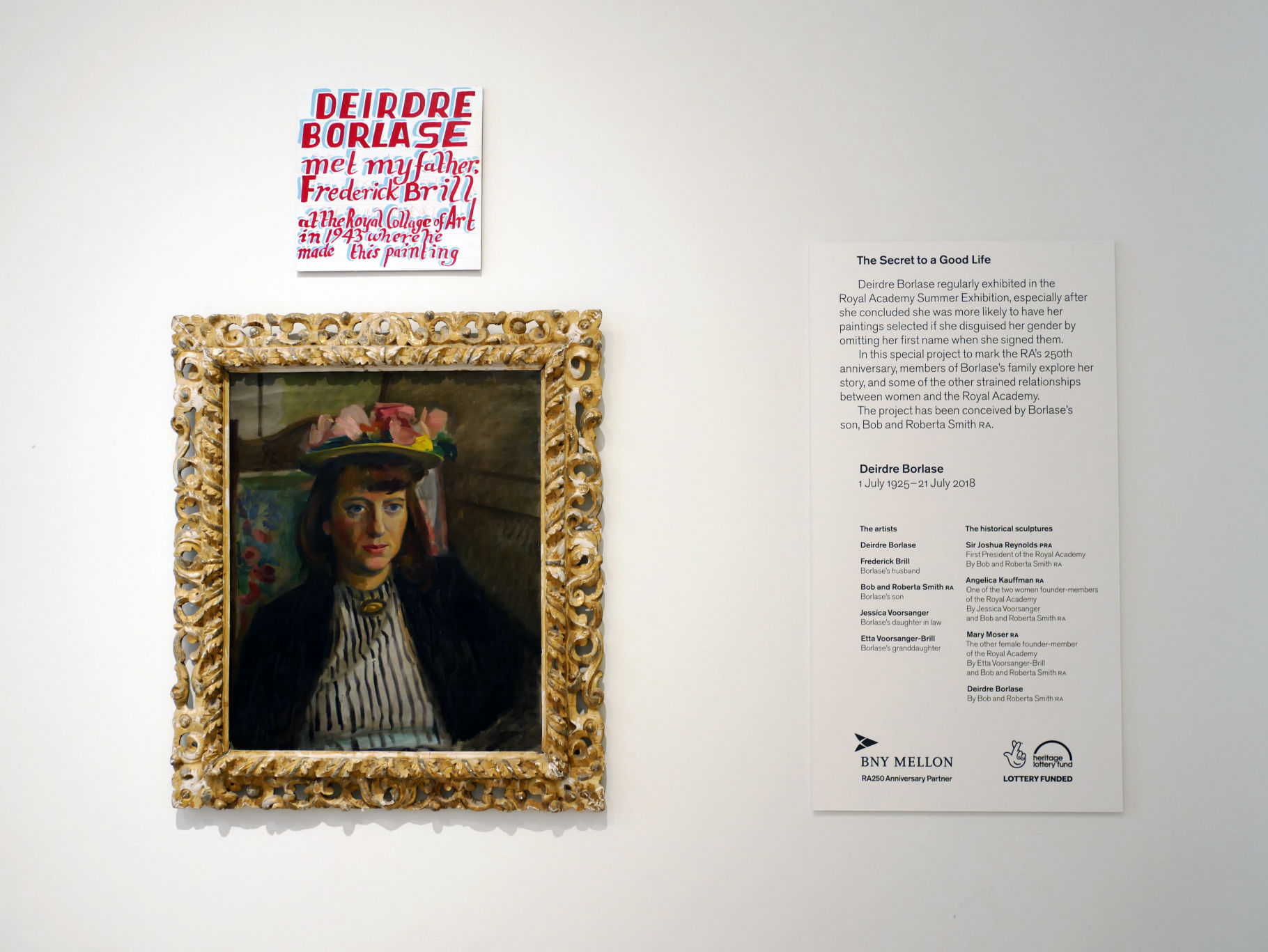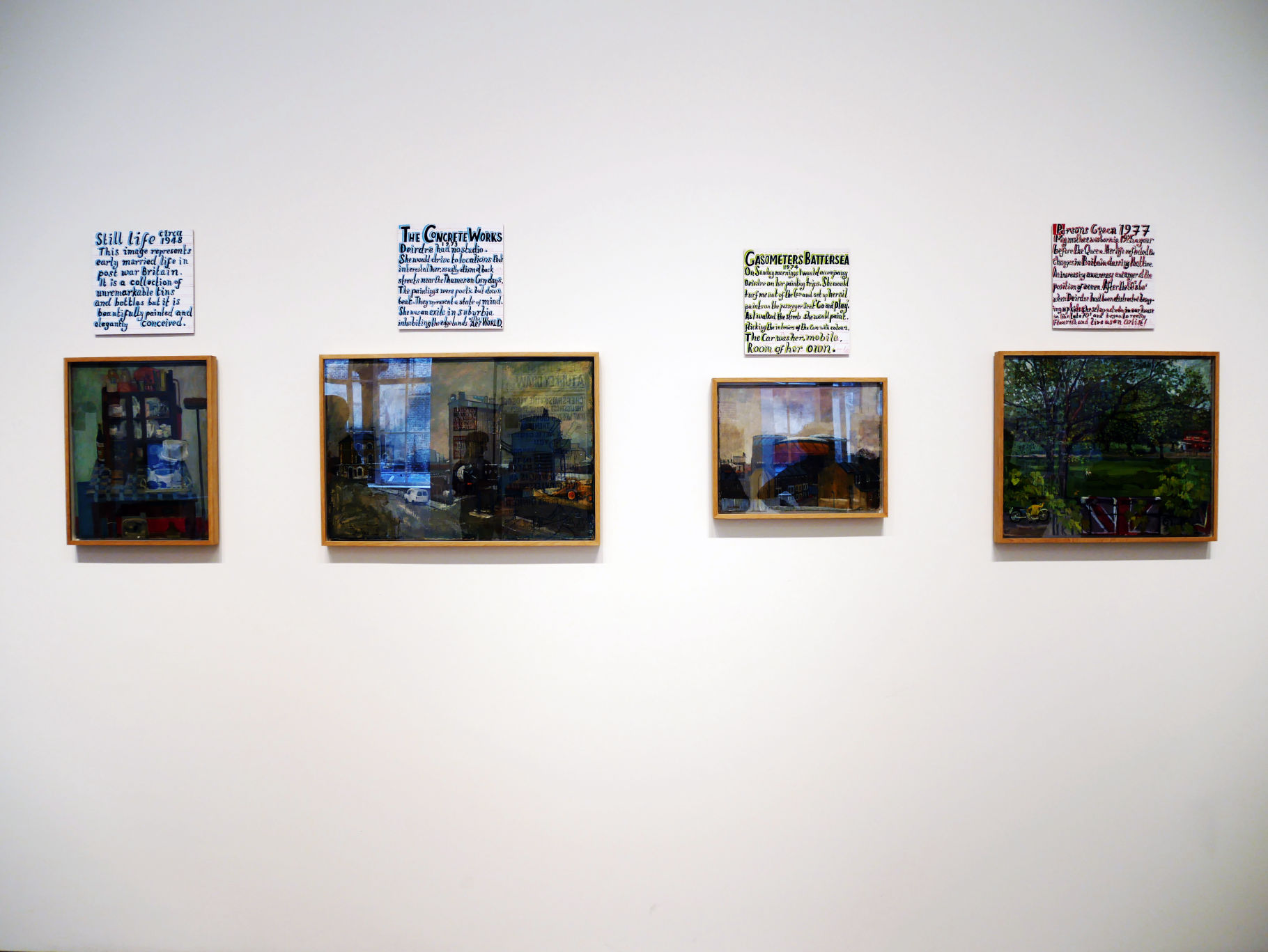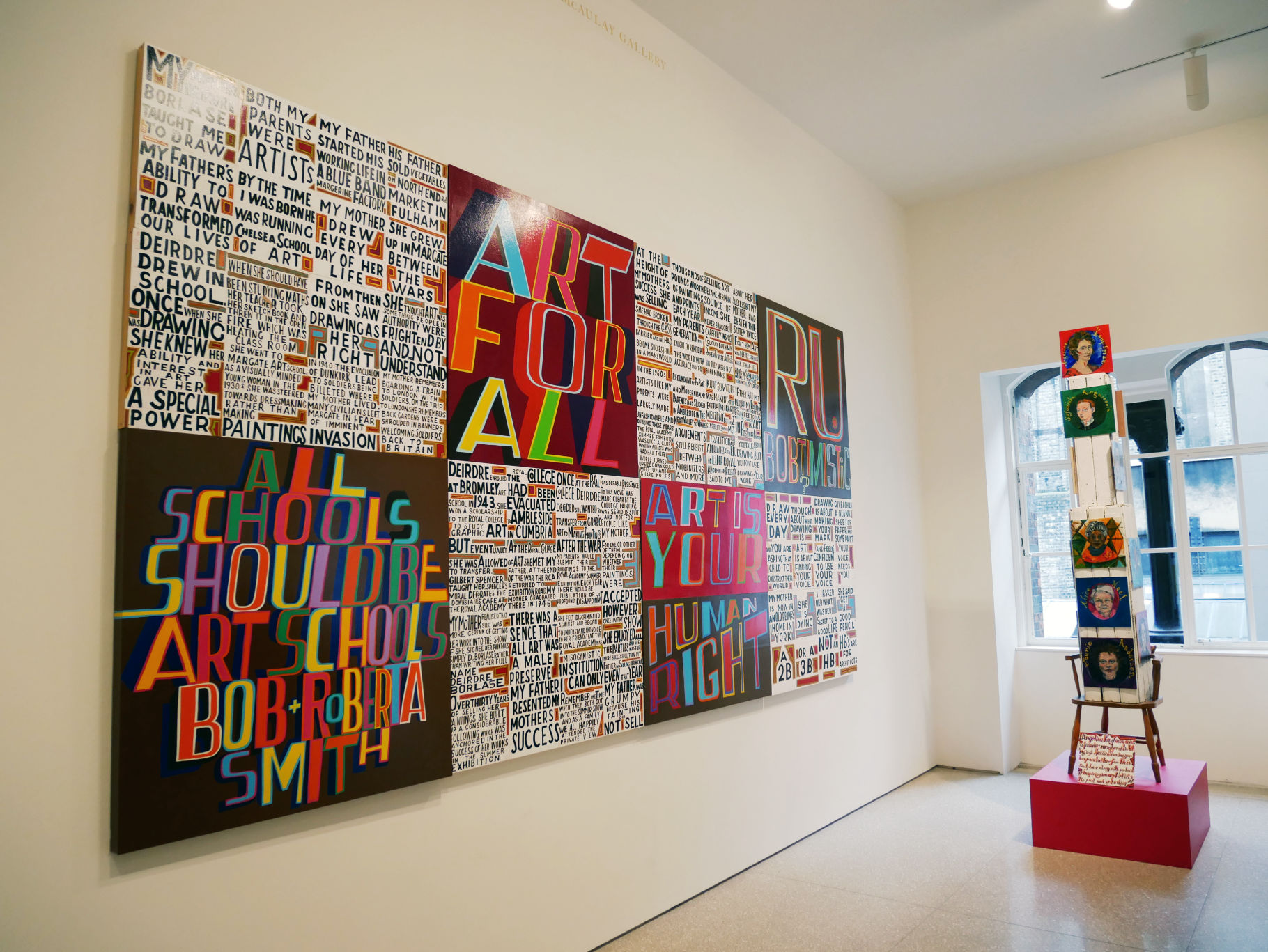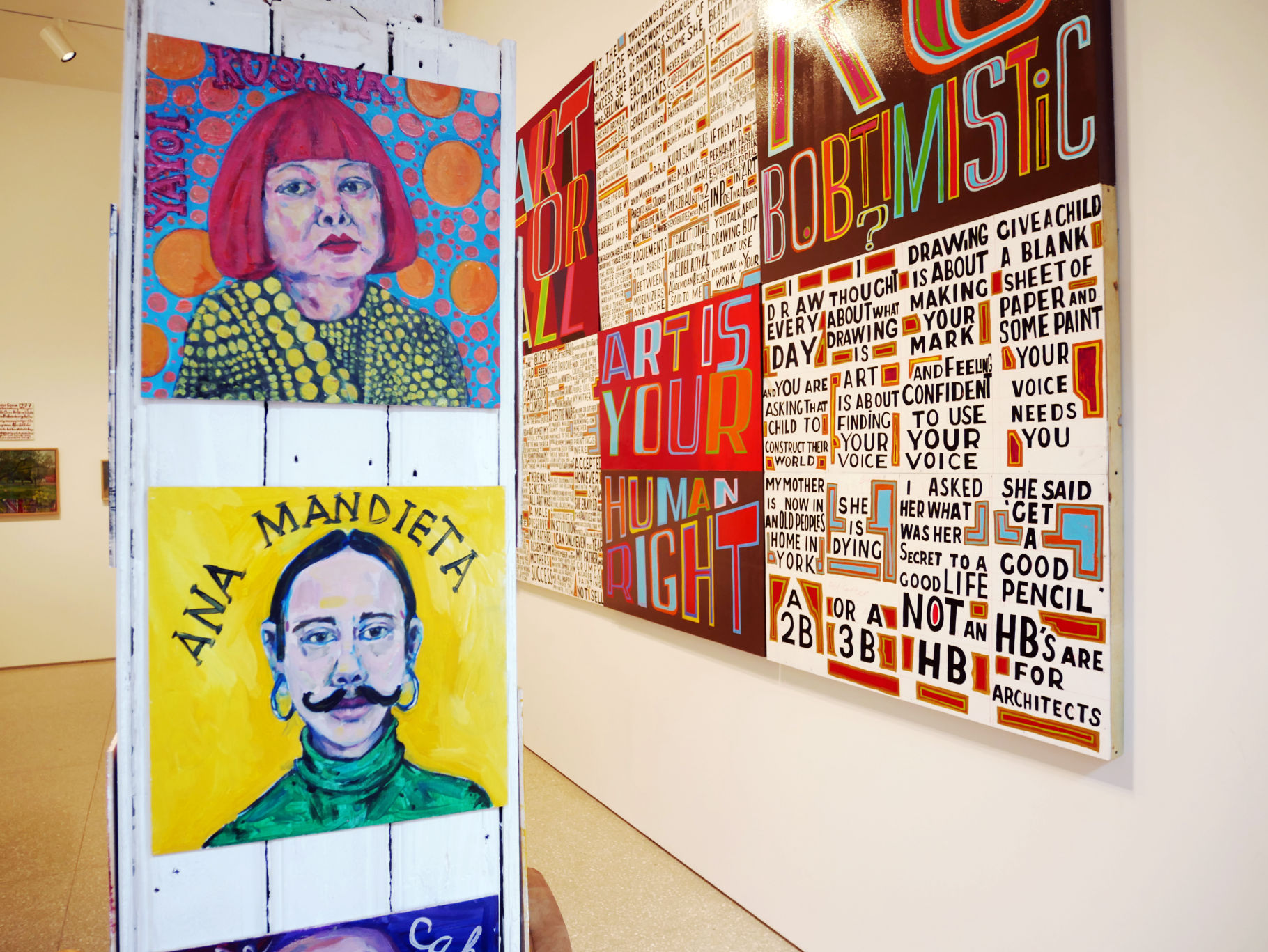

THE SECRET TO A GOOD LIFE was an exhibition at the Royal Academy of Arts featuring works by Bob & Roberta Smith and his family including mother Deidre Borlase, wife Jessica Voorsanger, and daughter Etta Voorsanger-Brill.
At the centre of the show was Smith's signature style of hand-painted lettering on wood panels mounted on walls, extending onto sculptural elements like doors and slats around a monument made of assembled fragments, an ode to his mother which served as a focal point in the middle of the room.
Alongside recurring messages like "All Schools Should Be Art Schools", the works share personal stories and memories of his mother, from her struggle for recognition as a female artist in a male-dominated world (to a point where she had to conceal her gender when submitting works for exhibits), to her advice that inspired the title, which reads: "The secret to a good life is to get a good pencil: a 2B or a 3B, not an HB. HBs are for architects."
Borlase was a painter who was hindered at times by outdated attitudes towards women in the arts, including skeptical treatment of her works by the Royal Academy itself. And in what seems like poetic justice, some of her works were showcased in this exhibit which hopes to signal progress since her time - but more importantly perhaps, it highlights the need to continuously pursue positive change at a time when it is still apparent that more work is needed.
A series of paintings by Voorsanger expands on this theme, featuring portraits of pivotal female figures that have broken through the ranks, from Frida Kahlo to Yayoi Kusama, assembled into another monument-like wooden sculpture echoing the achievements of its subjects that build on top of each other over time. This device was also reflected in a similar sculptural assemblage by Voorsanger-Brill, located on the oppossite corner of the room.
This exhibition reflects a number of elements within my own practice, from Smith's use of texts and language, to the show's overall inclination to tackle inequities, which in this case tilts heavily on gender, both of which can be related to wider intentions of works like Attention and Jeder Traum Hat Seinen Weg - although these projects differ in process, and are primarily focused on found words and messages that aim to reverberate anonymous voices.
Beyond my practice, the show resonated with me because it raised fundamental questions that still matter today: Who gets to make art? Who gets to be seen? And where? And when? And why? Who gets to decide what is art?
By extension, through the prism of intersectionality, the same issues faced by women in the arts so clearly demonstrated here can be applied more broadly to other factors that may equally impact people's general experience: age, race, sexuality, religion, class, nationality, education, mental or physical challenges, and anything else that can be used as a marker against anyone - potential barriers that people strive to surpass and overcome.
In a video interview, Smith described the project as "a meditation on who gets to make art... And more generally, who gets their work out there?" He also recognised "art's ability to emancipate" and give people a voice, promoting the idea that "art is about making your mark."
However, it is useful to note that this is not to say there is no 'good' or 'bad' art as such - which is in itself a constant negotiation between creators and viewers - but that art in general ought to be open to anyone who may wish to engage with it, and that any work of art should be judged on its own merit without bias or discrimination.
Raising awareness of such themes with far-reaching implications is, for me, the strength and importance of this show. It is also one of the reasons why I often refer back to Smith as a point of reference in my own research, particularly because of his worthwhile insistence of "Art for all."


